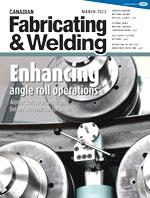Associate Editor
- FMA
- The Fabricator
- FABTECH
- Canadian Metalworking
Enhancing angle roll operations
Anyone can run an angle roller, but not everyone can roll angle
- By Lindsay Luminoso
- April 13, 2022
- Article
- Fabricating
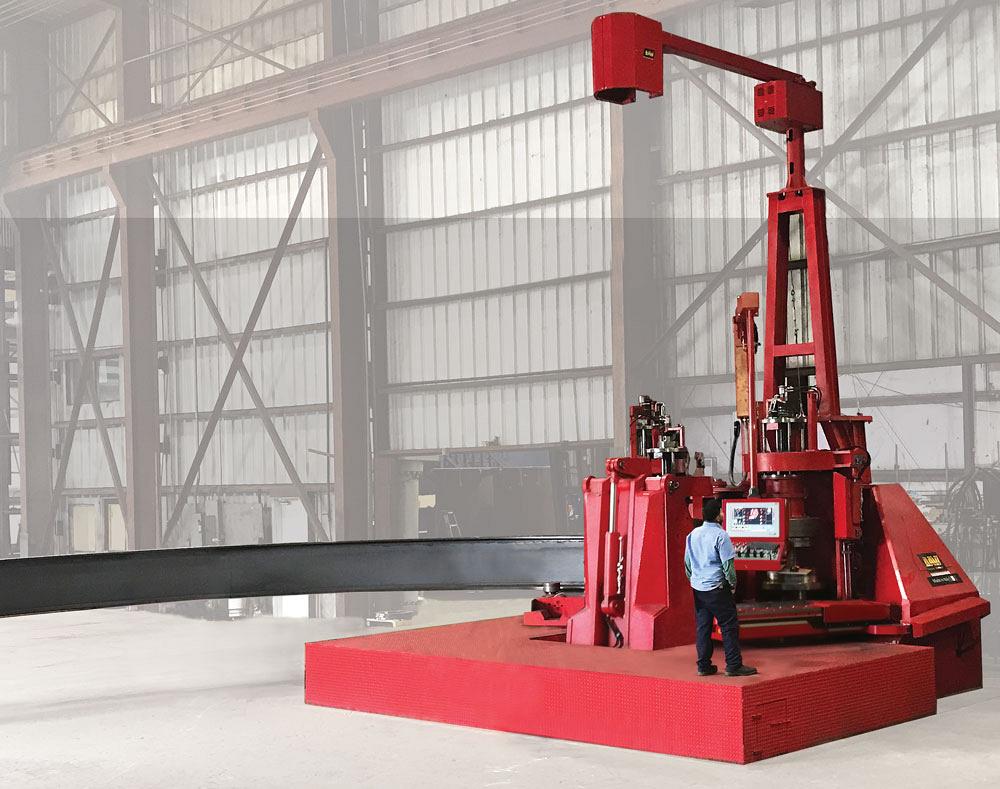
For the most part, two types of customers work with angle rollers: those that need to roll for themselves and those that roll for everybody, the latter referred to as master benders. DAVI
Angle roll, section roll, profile roll, or even the generic roller are terms that can be used when referring to a machine that shapes lengths of metal into rounded bends. These machines came about in the early 1900s to produce angles, tees, and bulb flats, which were used for the ribs of ship hulls. With the addition of beams and channels, the machines grew in size to accommodate larger workpieces and the tooling was adapted to expand capabilities. But it wasn’t until the 1970s that these machines underwent a significant change from mechanical to hydraulic, which most are to this day.
"Profile rolling has evolved from head hoops for wine barrels to intricate shapes used for both form and function," said Ebony Goldsmith, chief success facilitator, Kaast Machine Tools, Aldan, Pa. "As greater demands have been placed on rolling machines, they have had to adapt. Today angle rolling machines can feature complex hydromechanical mechanisms with one to 12 dies to bend, feed, roll, and sometimes even cut or weld a wide assortment of profiles utilizing CNC programming. Angle rollers can also be used for creating twists in material by adding a simple chuck to the main powered shaft. The material is secured on the opposite end by a stand and jig while being twisted. Scroll work can also be done with angle rollers with the correct accessories. Springs, loops, and radiused 90- degree bends can also be fabricated by those with the correct experience matched to the correct machine."
And while profile bending machines today have similar configurations to ones from the past, the technology, particularly in the controls and movements, has come a long way in making these machines more efficient and accurate.
"The industry has focused a lot of its efforts developing the CNCs for new angle rolls," said Andrea Comparin, head of sales Americas, Faccin Group, Brescia, Italy. "Today’s machines have a high repeatability for series production, but also devices to achieve high-accuracy bending radii. Measuring systems are now being integrated with CNCs to allow for feedback and correction during the bending cycle operation. Advanced hydraulic systems and electronic components are helping to make these machines more precise and reliable. We’ve even simplified the wiring in our system and remote monitoring to allow for better machine maintenance."
While there are varying configurations, three-roll angle rolls are far more common than four-roll angle rolls, which are designed for very specific jobs and projects. A four-roll angle roll has far less slack than its three-roll counterpart, but also does not have the versatility as it is less adept at bending all the different shapes a three-roll can.
According to Comparin, four-roll angle rolls are not chosen when high versatility is required; however, these machines solve three specific problems. First, they reduce the deformation of hollow profiles or profiles produced on press brakes by containing the whole profile during the bending process. Second, they offer more constant traction of the profile, helping to prevent slippage. Last, an extra advantage is the reduction in length of the flat edge.
Beyond configuration, it is important to understand the drive system of the machine.
"Most machines today have gone to three-roll drive, and if the machine is a three-roll drive, it will say exactly that," said Steve Bonnay, regional sales manager (Canada), DAVI, Cesena, Italy. "And that matters a lot. For example, if you have material that has been sitting outside exposed to the elements, potentially starting to rust, you need a machine that will be able to gain enough traction to pull the material through. A machine that has an independent motor and gearbox on each roll ensures that there is no loss of torque in the mechanical system. Second, if a shop’s engineers are experienced, they can actually change the rotation speed of the lower rolls; this is important in instances where shops are working with something like flat bar, where the lower rolls are rolling on the outside diameter. The top roll needs to turn marginally slower and the lower ones marginally faster, depending on how big the flat bar is, the diameter, and number of passes. You also want to make sure you don’t get any skipping."
For fabricators looking to perform this type of work, some machines offer a speed compensation system, where the lower rolls actually adjust the RPM that they’re turning to match the surface speed that is needed. This is especially important on larger angle rollers for larger components. For shops that are working with a 1-in. angle, there is little difference between the inside and outside, but with a 6-in. angle or an 8-in. beam, this becomes increasingly important.
Repeatability has also been at the forefront. Having a control that a fabricator can program step by step in sequential order can make performing angle roll operations easier. Some machines even come with high-performance hydraulics, allowing an experienced operator to manually override the CNC and add more torque to one particular roll if it is slipping or not performing properly.
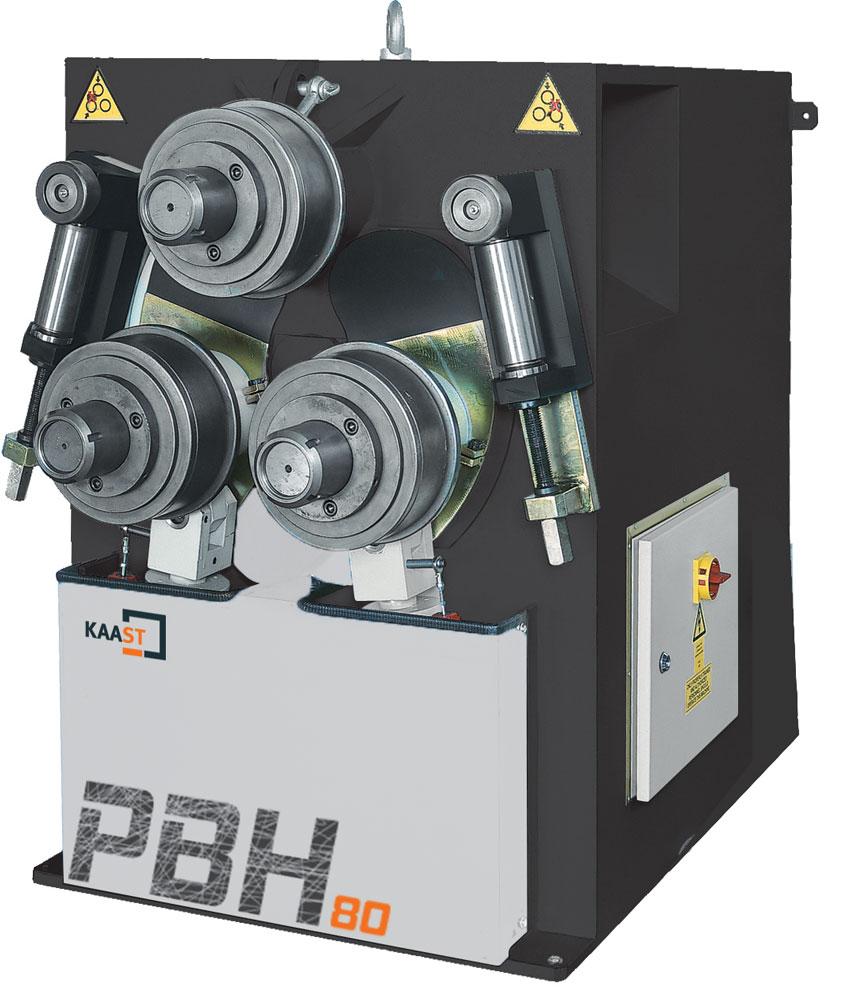
Fabricators should match the angle roller shaft diameter to the wall length of the leg of the material being used. Kaast
What to Look For
When purchasing a new machine, it’s so important to understand the range of jobs the machine will likely perform, from dimensions and profiles to material type and size, and whether the machine will primarily be used for one-offs or series production.
"For fabricators looking to produce special profiles, that’s important to know upfront as special tooling may need to be designed," said Comparin. "For shops doing a lot of one-off jobs, the CNC may not need to be as advanced as one for production runs. Whether they do lots of one-offs or they focus on large part runs will definitely dictate machine specifications."
Important features to look for in an angle roll include shaft size and die availability. The shaft length will determine the largest profile dimension that can be properly supported. It is necessary for the shaft to span the entire depth of the die, and the die depth should be matched to the material. The shaft diameter affects the radius that can be achieved, as well as the amount of force applied to the material.
"It’s recommended to match the angle roller shaft diameter to the wall length of the leg of the material you want to roll," said Goldsmith. "Two-in. angle? You need at least a 2-in.-diameter shaft. But is bigger always better? Not so much. The larger the shaft, the larger the dies."
When evaluating a machine, some fabricators believe that buying a bigger machine will allow greater flexibility. That’s just not true. Big machines are great for big profiles but are less adequate and accurate when bending small profiles.
Die availability should also influence an angle roll purchasing decision. According to Goldsmith, modular dies, which can be configured to support a range of squared profiles, are a great place to start a die collection. A healthy pack of shims for fine adjustment of the modular dies will ensure a better finished product when working with non-conforming or slightly irregular material.
"Custom dies should be considered for any profiles [rolled] on a daily basis to save time and increase productivity," said Goldsmith. "Installing custom dies involves sliding them onto the shaft and tightening the spanner nut."
Depending on the type of work the machine will take on, guides can be a great tool in a shop’s arsenal to ensure greater accuracy. Most advanced machines today have guides built into the left and right side of the machine and, depending on brand and size, can have anywhere from one axis up to three axes per side, which are designed to fight the twist that naturally occurs.
"An example demonstrating the importance of guides is when working with angle iron," said Bonnay. "Rolling it on the flat side, that’s easy. It doesn’t take nearly as much power and doesn’t have the resistance that it encounters if it was positioned on the edge, the hard way, which takes a significant amount of force. It will also try to twist, and instead of having an angle that is perfectly straight up and down, it will start to wander. Guides provide some pressure and fight physics to keep something straight that doesn’t want to be."
When rolling beam or channel the hard way, a machine with a hydraulic traction unit or pulling attachment can be helpful. This optional feature is an extra cylinder that sits between the lower rolls, providing hydraulic power to push or to pull.
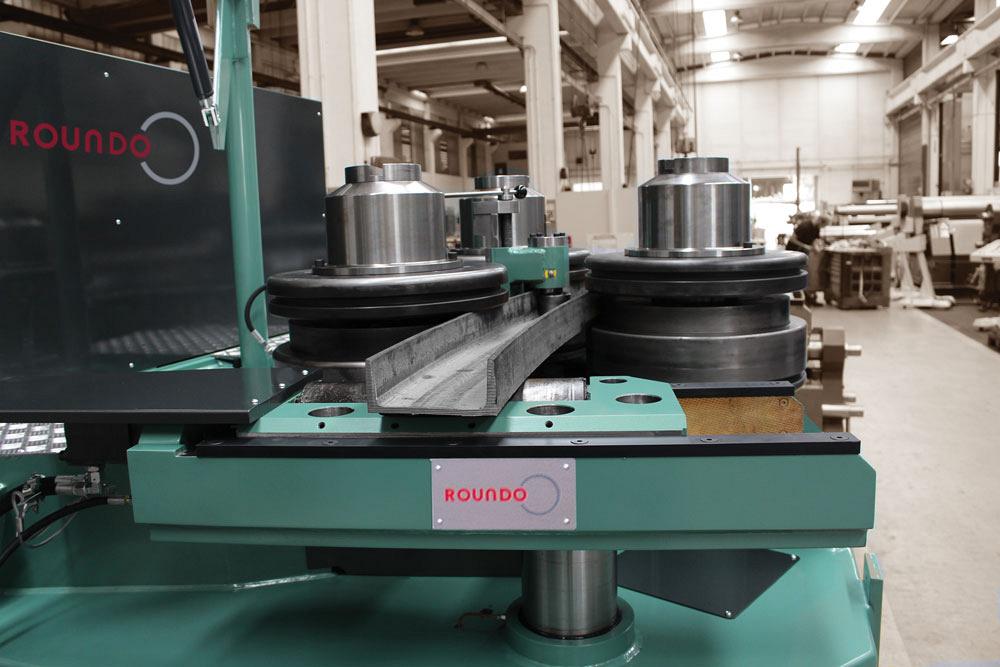
Today’s machines have a high repeatability for series production but also devices to achieve high-accuracy bending radii. Faccin
"Imagine a piece of C-channel where the big wide part is on the bottom and the two legs are pointing up," said Bonnay. "During the rolling process, the inside leg won’t want to roll when the outside leg starts to stretch because it takes significantly more power to compress than pull. The leg will eventually bend over, and rather than 90 degrees, it will be at 80 or 70 degrees. A pulling attachment or traction unit adds a cylinder to pull or push as necessary to minimize the deformation."
Material handling options are another thing to look for with angle rollers. Mandrel devices can be added to prevent thin-walled tube from distorting. A control stand can be stationary or movable, or remote controls can be added, like a crane pendant that allows the operator to walk around, which is especially helpful with large projects on large machines.
"The bigger the machine, the more likely somebody might want to be, say, 30 ft. away, because that beam could be coming out in a 60-ft. radius," said Bonnay. "The operator can test the sweep, then simply make adjustments through the remote control. Another thing to consider is temperature. If you are in warmer climates, adding a cooler to keep the hydraulics cool, or in cold climates adding submerged tank heaters, will help keep the oil at a more consistent temperature."
Training and Experience
The experts agree that bending profiles is an art, and an angle roll is not necessarily a standard fabricating shop machine nor does every operator have the skills to produce accurate parts.
"It is important for owners and operators to know and understand the abilities and limitations of the machine they are using, as well as the skill level required to produce accurate parts," said Goldsmith. "Simple in design, these machines manipulate complex forces that do not always perform as expected. Often a shop owner will invest in a profile roller and then ask his capable machinist—with little to no bending experience—to run parts. The owner may be understandably disappointed with the quality of the parts produced but, incorrectly, put the blame on the machine. Angle and profile rolling is an art form improved only by hands on experience. Can anybody run an angle roller? Yes. Can anyone roll angle? No."
For the most part, two types of customers work with angle rollers: those that need to roll for themselves and those that roll for everybody, the latter referred to as master benders. Master benders know exactly what they’re doing. They also have very specific wants and needs.
"It’s with master benders that we are really seeing a lot of innovation," said Bonnay. "For example, we developed our camera in conjunction with a number of master benders based on some challenges they wanted to solve. When producing complex parts with multiple radii, the material handling needed to ensure the part is accurate can be a nightmare. In many cases, it has to come off the machine and be put on the ground on a template multiple times throughout the process. That’s why we developed a camera system, to eliminate that back and forth."
Comparin added that a laser measuring system can be used to assess a profile radius and provide feedback to the CNC to make necessary adjustments.
"Having a laser capable of measuring from small to extremely large radii ensures high accuracy," he said. "And even more, that feedback loop allows for shops to rely on the machine more than the experience of the operators. The know-how and knowledge are built into the CNC and automation systems, giving shops a little more flexibility with operator expertise. In today’s environment, the operator must have a lot of experience and plays a big role in the success of an angle roll operation. CNCs and advanced technology are helping make that easier, but it’s certainly not something you can just throw someone on and expect great results."
This is why training is so important. Some shops believe that angle rolling is just an extension of plate rolling, but it’s not. With plate, it is always bending the easy way; with angle roll operations, physics play a significant role, and the operator always needs to be worried about twists and getting the angle just right. Teaching an operator how to properly use an angle roller and taking advantage of advanced features are worthwhile investments and important to help ensure maximum usage of the machine.
Associate Editor Lindsay Luminoso can be reached at lluminoso@canadianfabweld.com.
DAVI, www.davi.com
Faccin Group, www.faccin.com
Kaast Machine Tools, www.kaast-usa.com
About the Author

Lindsay Luminoso
1154 Warden Avenue
Toronto, M1R 0A1 Canada
Lindsay Luminoso, associate editor, contributes to both Canadian Metalworking and Canadian Fabricating & Welding. She worked as an associate editor/web editor, at Canadian Metalworking from 2014-2016 and was most recently an associate editor at Design Engineering.
Luminoso has a bachelor of arts from Carleton University, a bachelor of education from Ottawa University, and a graduate certificate in book, magazine, and digital publishing from Centennial College.
Related Companies
subscribe now


Keep up to date with the latest news, events, and technology for all things metal from our pair of monthly magazines written specifically for Canadian manufacturers!
Start Your Free Subscription- Trending Articles
CWB Group launches full-cycle assessment and training program

Achieving success with mechanized plasma cutting

3D laser tube cutting system available in 3, 4, or 5 kW

Brushless copper tubing cutter adjusts to ODs up to 2-1/8 in.

Welding system features four advanced MIG/MAG WeldModes
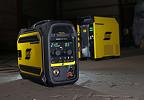
- Industry Events
MME Winnipeg
- April 30, 2024
- Winnipeg, ON Canada
CTMA Economic Uncertainty: Helping You Navigate Windsor Seminar
- April 30, 2024
- Windsor, ON Canada
CTMA Economic Uncertainty: Helping You Navigate Kitchener Seminar
- May 2, 2024
- Kitchener, ON Canada
Automate 2024
- May 6 - 9, 2024
- Chicago, IL
ANCA Open House
- May 7 - 8, 2024
- Wixom, MI













